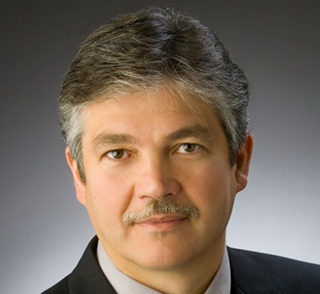
CIM Distinguished Lecturers
Dr. Hamid Mumin is Professor and Director of the Department of Geology at Brandon University. He was born in Toronto and grew up on a farm near Milton, Ontario. He received his degree in geoengineering from the University of Toronto in 1985, his MSc in economic geology from the University of Toronto, and his Ph.D. and postdoctoral fellowship from Western University. As an engineer and geoscientist, he has worked in collaboration with the industrial sector on many projects. Since 1995, he has taught various geoscience courses at Brandon University. His research spans three continents, but focuses primarily on Canada's Far North, where he collaborates with government and industry on mineral exploration and development projects. He is also Past President of Geoscience Canada and a member of the Board of Governors of Brandon University.
Distinguished Lecturer 2010-11
Lecture Abstract
Iron Oxide Copper-Gold Deposits in Genetic Context
Hydrothermal iron oxide copper-gold (IOCG) deposits inspire controversy and debate over their classification, origin and, in particular, their relationship to a variety of disparate deposit groups. The IOCG deposit-type proper is comprised of a recognizable group of hydrothermal, primarily igneous-associated deposits with: i) greater than 15 to 20% hydrothermal magnetite and/or hematite genetically associated with economic mineralization; ii) economic accumulation of one or more of Fe, Cu, Au, U, Ag, Co, Bi, Mo ± a variety of other metals in minor or localized concentrations; and iii) spatially extensive and diagnostic hydrothermal systems characterized by a core zone of higher temperature alkali-iron (Na-K-Fe) alteration, and distal lower temperature K-Fe-Ca-Si alteration.
A genetic and spatial association of IOCG systems to porphyry copper, iron oxide apatite, iron oxide copper-gold, skarn and epithermal deposit types is well manifested in the 1.9 to 1.8 Ga Great Bear Magmatic Zone (GBMZ) in the Northwest Territories, where superb preservation and bedrock exposure provide a measure of much needed clarity. Felsic to intermediate stratovolcano complexes are preserved intermittently along the GBMZ. Their subvolcanic intrusions generated giant IOCG fertile systems, which in some areas spatially exceed 100 square kilometres in exposed extent. Within the same hydrothermal systems are found a continuum of porphyry, IOCG and epithermal deposit styles that, in isolation and out of context, can be mistaken for disparate and unrelated events.
In modelling the IOCG deposits of the GBMZ, a pattern of alteration, mineralization and geotectonic setting emerges that is both distinctly different, yet clearly resembles some classic porphyry systems. Some of the underlying reasons for these similarities and differences are illustrated and discussed. Most importantly, placing IOCG systems in their global genetic context provides very attractive and robust models for exploration of igneous-hydrothermal systems.
 - dev.png)

